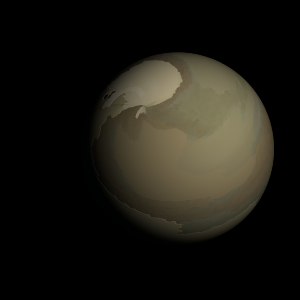|
|
Space Astro
|
Info for exoplanet "Kyunyomu-cha"
| Scientific (actual) data |
|---|
| Name | Kepler-1052 b |
| Planet status | Confirmed |
| Radius | 0.261 |
| Orbital period | 34.8538 |
| Discovered | 2016 |
| Updated | 2021-02-05 |
| Tconj | 2455000 |
| Publication | Announced on a website |
| Detection type | Primary Transit |
| Alternate names | 2MASS J19412225+4636081 b, K02012.01, KIC 9839821 b, KOI-2012 b, KOI-2012.01, WISE J194122.25+463607.9 b |
| Star name | Kepler-1052 |
| Right ascension | 295.34° |
| Declination | 46.6° |
| Mag j | 13.727 |
| Mag h | 13.393 |
| Mag k | 13.305 |
| Star distance | 1051 |
| Star metallicity | 0 |
| Star mass | 1.03 |
| Star radius | 1.03 |
| Star age | 3.55 |
| Star temperature | 5888 |
| Star alternate names | 2MASS J19412225+4636081, KIC 9839821, KOI-2012, WISE J194122.25+463607.9 |
| Wikipedia article | Kepler-1052 b |
Back
| |
| Fictional info (?) |
|---|
| Suggested name | Kyunyomu-cha |
| Planet type | Cold planet |
| When viewed from Earth, this proximity to Kepler-1052 means the planet can only be seen near the western or eastern horizon during the early evening or early morning. |
| Atmosphere | Argon | 56% |
| Ozone | 43% |
| Molecular hydrogen | 0.21% |
| Atmospheric pressure | 1 bar |
 |
| No known satellites |
| Google search for Kyunyomu-cha |
|
Website by Joachim Michaelis
|
|
|
|